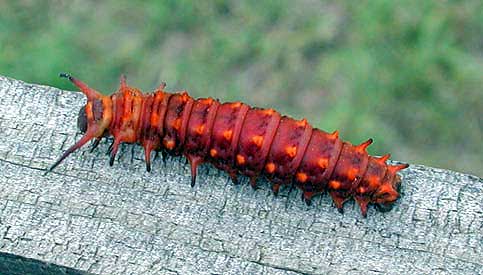Do you know the story of Odysseus – a legendary Greek king of Ithaca and the hero of Homer’s epic poem the Odyssey. In part of his journey to the underworld, Odysseus had to choose his and his companions’ path. He had to choose which of two monsters to confront on his way – Scylla and Charybdis. The hero chose to pass and fight the six-headed Scylla and lost some of his best men, but the other option – passing closer to Charybdis – a deadly whirlpool, meant certain death for the whole crew on his ship. And from stories like this came the proverb of “the necessary evil” or “the lesser of two evils”, regarding having to endure something unpleasant in order to avoid the worse. But would you be surprised if I told you that nature has its tough choices to make too? There’s a parasite worm used to avoid uncontrollable infestation by pest insects able to destroy many useful plants.
I present you – the Heterorhabditis bacteriophora. It’s a worm which can infect the gut of the Japanese beetle and a bunch of other plant pests’ larvae. This worm infects exclusively pest species (as far as experience and knowledge showed us thus far) and actually doesn’t do much harm to the insect. Mostly it steals a little bit of the food passing through the insect’s gut, but usually not to an extent that it would starve it. After all, this would cut its own food supply…
What kills the pests is a bacterium that is a symbiont for the worm. Now that microscopic species is the real killer – Photorhabdus luminescens! This bacteria is able to kill the infected insect sometimes in only 48h, by expressing a protein-type of toxin from a single gene – mcf. Mcf stands for “makes caterpillars floppy” – scientists always had a nack for naming things!
Being grateful to the worm for providing a suitable victim, the bacteria pays off well – along with the toxin which kills the insect, it secrets also enzymes which degrade the body of the insect to provide huge amount of nutrients for the worm and the bacterium itself. This creative killer does not stop there – they also provide protection for both symbionts by secreting antibiotics and repelling compounds to keep scavenging insects away from their kill.
At least the insects die pretty – yet another trick of the infection with the worm (hence with the bacteria) is the change of color of the infected larvae to an intense red. As if this is not enough, they also turn luminescent. This is just another way that the bacteria secures the scored pray just for itself and essentially for its “pet” worm – most animals know well that flashy colors usually mean danger or crappy tastes and stay away from the infected larvae, leaving all the nutrients to the creative killer and its “transport species”.

On a different note, because its luminescent proteins, the bacterium is useful out of the field and into the labs too. It is used to produce glowing marker-molecules for cellular biology studies.
So basically, nature had given us an incredibly efficient “killer team with a style” to control pest insects and protect valuable cultures and decorative plants by purely natural means. Evolving such an elaborate plot to control populations of species (a parasite to control a pest) for sure didn’t take a day or two, but it is now working with an incredible precision and we can only learn and marvel at the trick nature still has to show us.


Comments